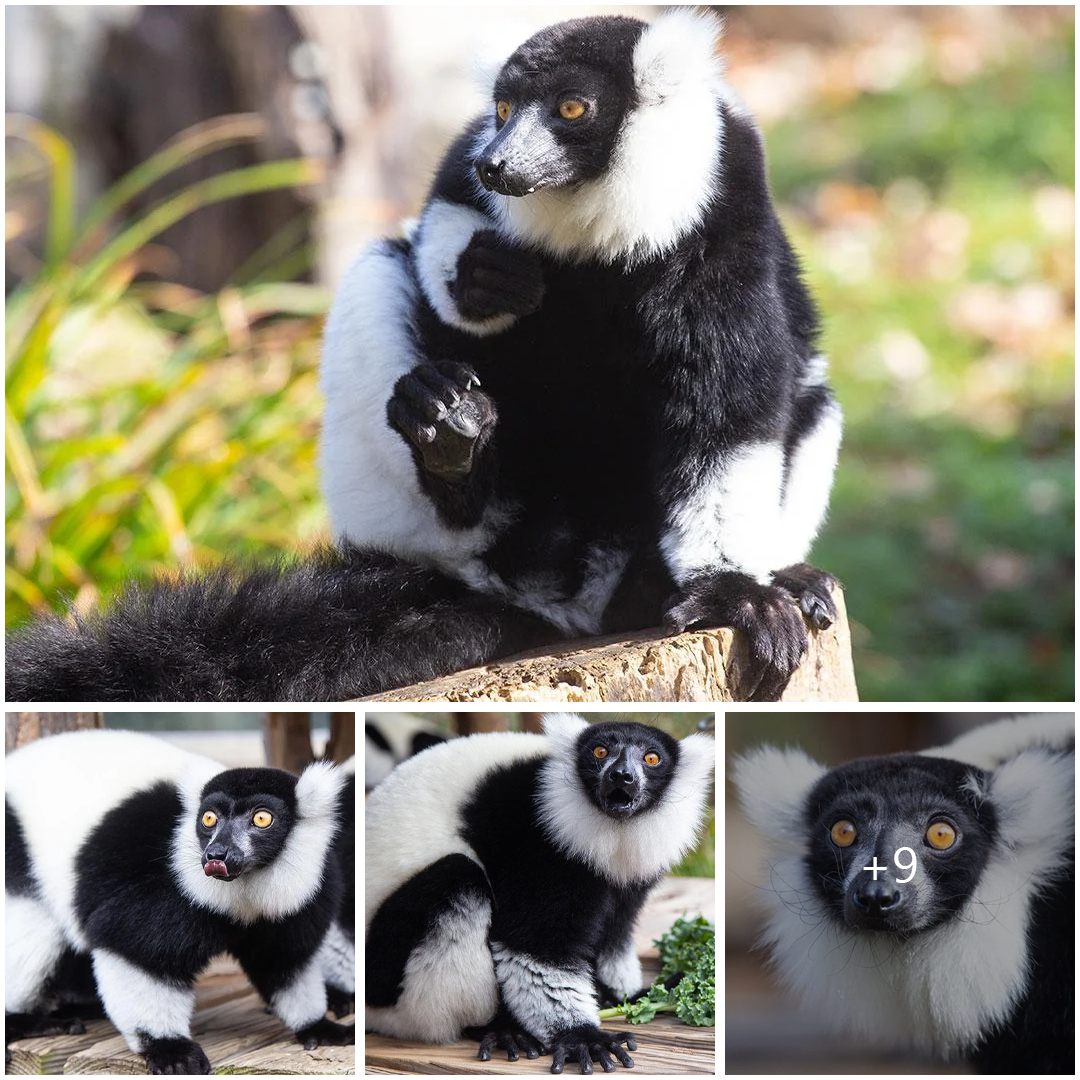
As a primarily arboreal and quadrupedal species, they often walk, run and leap from branch to branch. Because ruffed lemurs are especially frugivorous, they are also adept at suspending from their feet to help reach ripe fruit hanging from the tree branches. This is known as suspensory movement and is exhibited in this species more so than other lemur species. Social structure consists of small family groups, typically between two and five individuals. Black-and-white ruffed lemurs have been observed in larger groups of up to 16 individuals but those large groups are typically comprised of several smaller groups.
In the wild, they are primarily frugivorous, but will also eat a variety of seeds, leaves and nectar, which they are able to reach with their long tongues. Black-and-white ruffed lemurs are also known as the world’s largest pollinators, due to their mutualistic relationship with the traveler’s tree (also known as the traveler’s palm). They have the unique ability, among pollinators, to open the tree’s flowers. While the lemurs benefit by eating the nectar within the flowers, the tree benefits from the pollination that occurs when the pollen sticks to the lemurs’ faces and gets transported to the next tree.
At the Smithsonian’s National Zoo, they receive a diet consisting of greens, fruits, vegetables and leaf eater biscuits.





